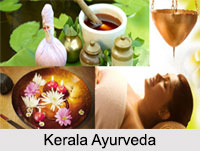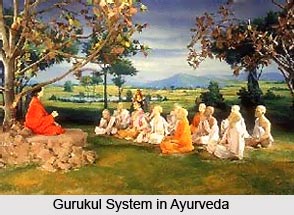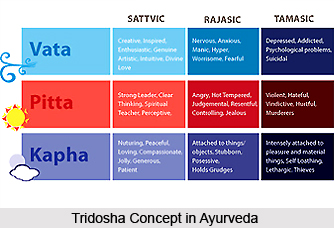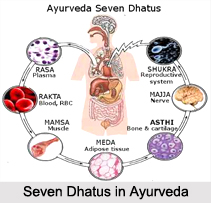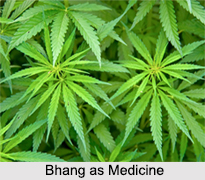 Cannabis Sativa or the "Bhang" has been used from a very remote period both in medicine and as an intoxicating agent. The three principal forms in which Indian hemp is met with in India are, Ganja, the dried flowering tops of the female plant, from which the resin has not been removed, Charas, the resinous exudation from the leaves, stems and flowers, Bhang, the larger leaves and seed vessels without the stalks.
Cannabis Sativa or the "Bhang" has been used from a very remote period both in medicine and as an intoxicating agent. The three principal forms in which Indian hemp is met with in India are, Ganja, the dried flowering tops of the female plant, from which the resin has not been removed, Charas, the resinous exudation from the leaves, stems and flowers, Bhang, the larger leaves and seed vessels without the stalks.
Benefits of Bhang
The leaves of Cannabis sativa are purified by being boiled in milk before use. They are regarded as heating, digestive, astringent and narcotic.
Dose of Bhang in Medicine
Numerous confections of bhang, such as Kamesvara modaka, Madana modaka, Balyasakrasana modaka, etc., are described in books. These, as their names imply, are considered aphrodisiac and are used in chronic bowel complaints and nervous debility. Most of them are prepared with equal parts of a number of supposed tonic and aphrodisiac substances in small quantities and bhang equal in weight to all the other ingredients, together with sugar, honey and the usual aromatics. The following is an illustration.
Madana modaka: Take the three myrobalans, ginger, long pepper, black pepper, Rhus succedanea (sringi), Pachak root, coriander, rock salt, zedoary root, leaves of Pinus Webbiana (talisa), bark of Myrica sapida (kalphala) flowers of Mesua ferrea (nagakesara), ajwain, seeds of Seseli Indicum (vanayamani), liquorice root, seeds of Trigonella foemim-graecum (methi), cumin and nigella seeds equal parts; hemp leaves with flowers and seeds fried in clarified butter, equal in weight to all the other ingredients; sugar equal in weight to the hemp. Prepare a syrup with the sugar, then add the other substances in fine powder and make into a confection. Lastly add clarified butter, honey, powdered sesamum seeds, cardamoms, cinnamon, tejapatra leaves and camphor, each 2 tolas, and make into boluses of about 80 grains each. This confection is used in cough, chronic bowel complaints and impotence.
Jatiphaladya Churna: Take nutmeg, cloves, cinnamon, cardamom, tejapatra leaves, flowers of Mesua ferrea (nagakesara), camphor, sandal wood, sesamum seeds, bamboo manna, flowers of Tabernaemontana coronaria (tagara), chebulic and emblic myrobalans, long pepper, black pepper, ginger, leaves of Pinus Webbiana (talisa), plumbago root, cumin seeds and the seeds of Embelia Ribes (viranga), equal parts, purified bhang equal in weight to all the above ingredients, and sugar twice as much as the bhang. Grind the ingredients to powder and mix. Dose should be about 20 to 40 grains. This preparation is given in diarrhoea, indigestion and loss of appetite.
Jvalanala Rasa: Take yavakshara and sarjikakshara (impure carbonates of potash and soda), borax, mercury, sulphur, long pepper, black pepper, Piper Chaba (chavya) and ginger, equal parts, fried leaves of Cannabis sativa equal to all the above ingredients, root of Moringa pterygosperma half the weight of bhang; powder the ingredients, mix and soak the mixed powder for 3 days in each of the following fluids, namely a decoction or fresh juice of the leaves of Cannabis Indica, the roots of Moringa pterygosperma and Plumbago Rosea, and then dried in the sun. Then roast the mass lightly and make into a pill mass with the juice of the leaves of Wedelia calendulacea (Bhringaraja). The dose should be about half a drachm with honey. This medicine is given in indigestion and loss of appetite with nausea and vomiting.
In sleeplessness, the powder of the fried leaves is given in suitable doses for inducing sleep and removing pain.
